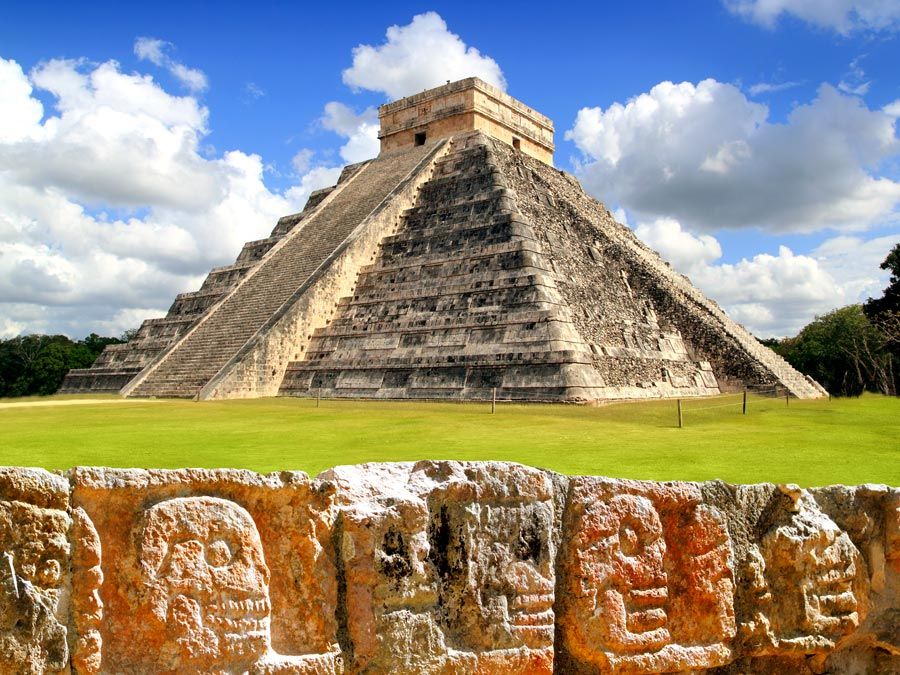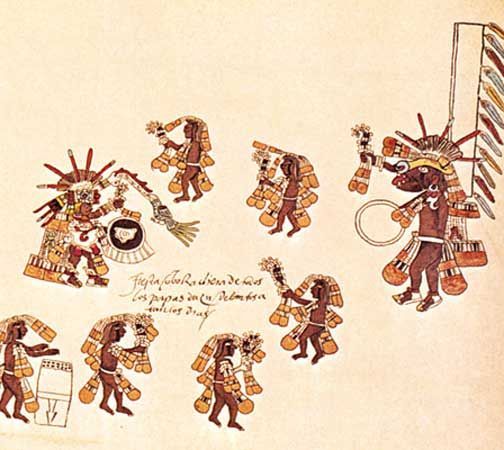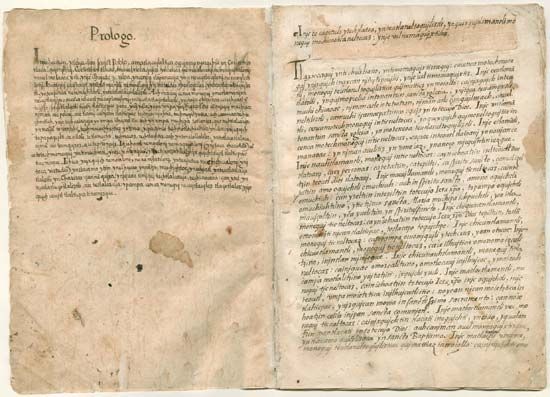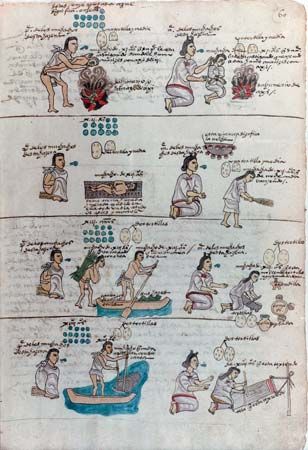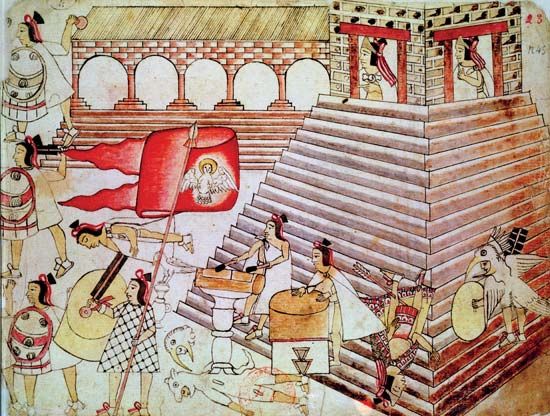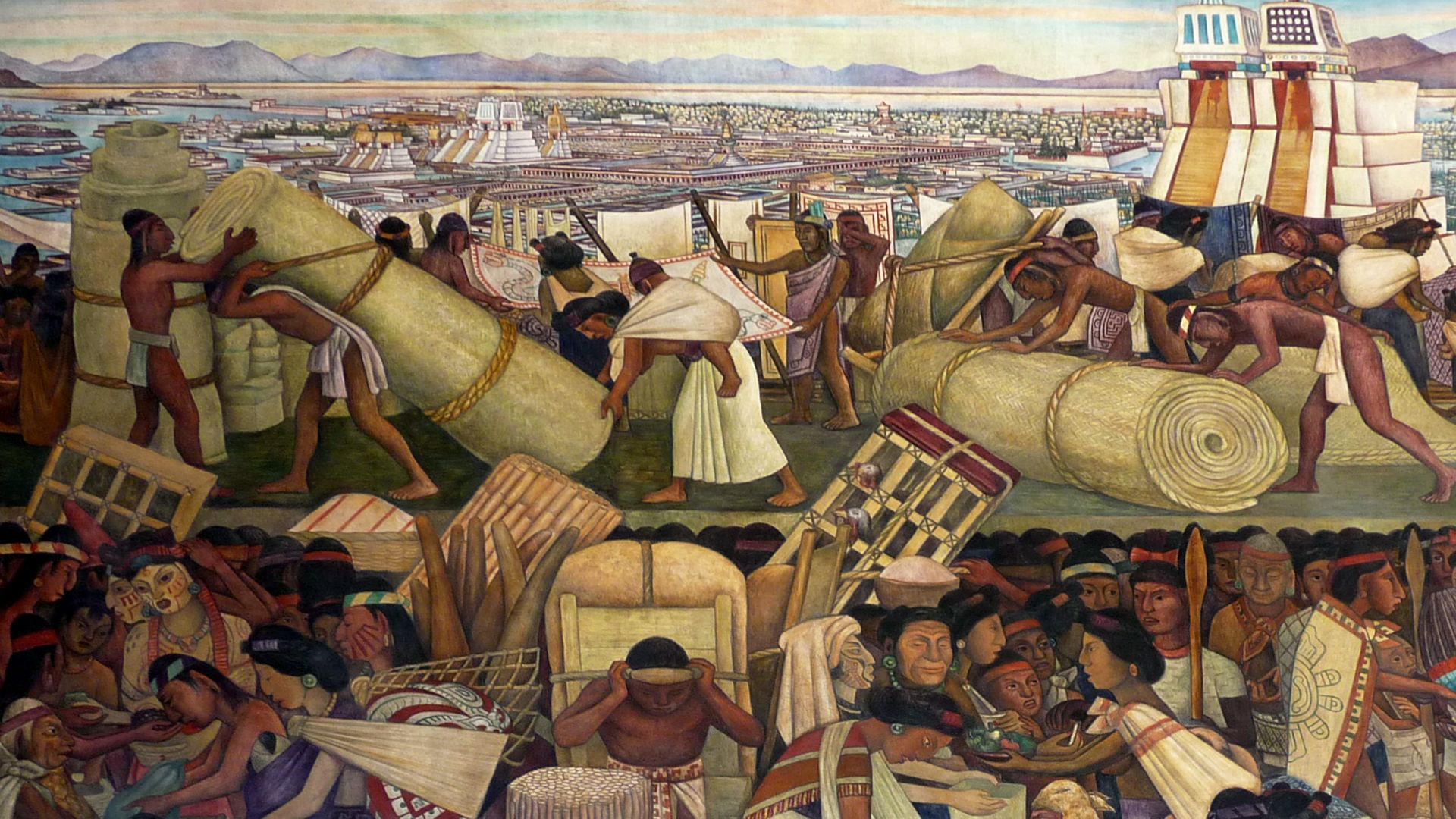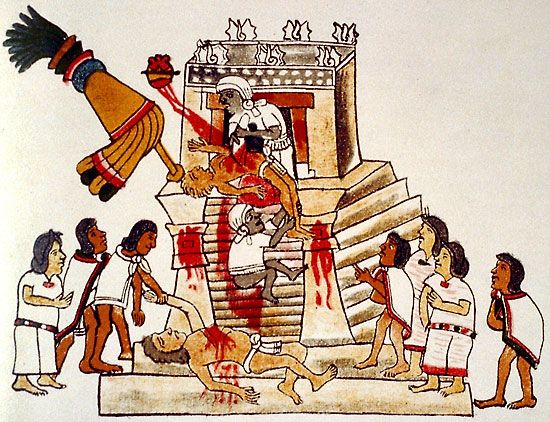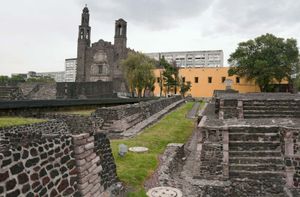Aztec
- Self name:
- Culhua-Mexica
- Key People:
- Ixtlilxóchitl
- Related Topics:
- pre-Columbian civilizations
- Mesoamerican civilization
- resplendent quetzal
-
Who were the Aztecs?
-
Where was the Aztec civilization located?
-
How did the Aztecs build and organize their society?
-
What were some of the key aspects of Aztec religion and mythology?
-
How did the Aztecs interact with neighboring cultures and civilizations?
-
What was the role of agriculture and trade in the Aztec economy?
-
How did the Aztec Empire expand and maintain control over its territories?
-
What led to the decline and fall of the Aztec Empire?
-
How has Aztec culture and history influenced modern society and culture?
News •
Aztec, Nahuatl-speaking people who in the 15th and early 16th centuries ruled a large empire in what is now central and southern Mexico. The name Aztec is derived from Aztlán (variously translated as “White Land,” “Land of White Herons,” or “Place of Herons”), an allusion to their origins, probably in northwestern Mexico. They were also called the Tenochca, from an eponymous ancestor, Tenoch, and the Mexica, probably from Metzliapán (“Moon Lake”), the mystical name for Lake Texcoco. From Tenochca was derived the name of their great city, Tenochtitlán, founded on an island in Lake Texcoco, in the Valley of Mexico. From Mexica came the name for the city that superseded the Aztec capital and for the surrounding valley, which was applied later to the whole Mexican nation. The Aztecs referred to themselves as Culhua-Mexica, to link themselves with Colhuacán, the center of the most-civilized people of the Valley of Mexico. See also pre-Columbian civilizations: Aztec culture to the time of the Spanish conquest.
Origins of the Aztec people
The origin of the Aztec people is uncertain, but elements of their own tradition suggest that they were a tribe of hunters and gatherers on the northern Mexican plateau before their appearance in Mesoamerica in perhaps the 12th century ce; Aztlán, however, may be legendary. It is possible that their migration southward was part of a general movement of peoples that followed, or perhaps helped trigger, the collapse of the highly developed Toltec civilization of central Mexico and its capital, Tula, a spectacular urban cener that featured pyramids, temples, public buildings, and statuary.
At the beginning of the 12th century, catastrophe befell Toltec civilization when Tula was attacked and destroyed, as were other important Toltec centers. Tribes of hunters and gatherers, including a group of Chichimec under the leadership of Xólotl, took advantage of the situation and traveled from the arid plateau of northern Mexico toward the fertile, heavily settled central zone. Xólotl’s Chichimec joined forces with the remaining Toltecs, resulting in a period of relative peace and cultural progress in the Valley of Mexico. During this time the Aztecs, who, according to legend, had been wandering in search of a new place to settle, established a precarious home near the ruins of Tula. There they improved their approach to agriculture and acquired other technological knowledge.
However, their stay was temporary. Aztec tradition holds that the god Huitzilopochtli instructed them to depart again in search of a permanent home, the location of which would be revealed by the appearance of an eagle perched on a nopal cactus with a serpent in its beak (an image that is memorialized on Mexico’s national flag). A long pilgrimage ensued that ended in 1325 on a small island in Lake Texcoco, where, it is said, elder members of the people spotted the eagle, the cactus, and the serpent. There they built a temple and, around it, on islands in Lake Texcoco, the first dwellings of what was to become the powerful city of Tenochtitlán.
